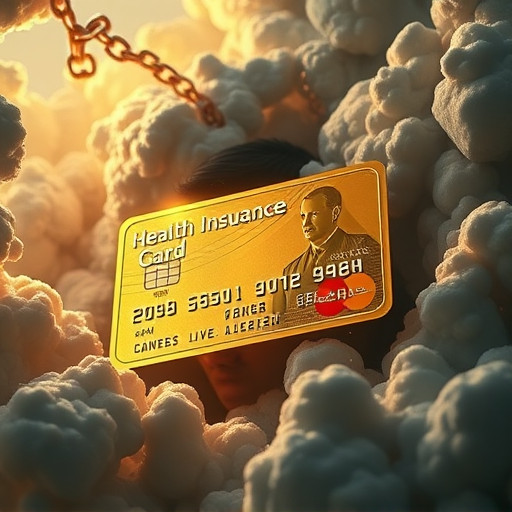Exploring Diverse Health Insurance Options in the USA – A Comprehensive Guide

When it comes to securing your health and financial well-being, understanding the various Health Insurance Options in the USA is crucial. With a myriad of choices available, selecting the right coverage can often feel overwhelming. This article aims to demystify these options, providing insights that empower individuals and families to make informed decisions about their health insurance needs.
Understanding Health Insurance Options in the USA
Navigating through the landscape of Health Insurance Options in the USA begins with grasping the basics of what health insurance entails.
Health insurance is essentially a contract between an individual and an insurer, where the insurer agrees to cover certain medical costs in exchange for premiums paid by the insured. The types of health insurance plans available in the USA can be broadly categorized into several distinct options.
Individual and Family Plans
Individual and family plans are designed to cover the healthcare needs of either one person or multiple members of a household.
These plans can be purchased directly from insurance companies or through state and federal exchanges established under the Affordable Care Act (ACA).
Premiums and Deductibles
One of the critical factors to consider when exploring individual and family plans is the balance between premiums and deductibles.
Premiums refer to the monthly cost of maintaining your insurance policy, while deductibles are the amount you must pay out-of-pocket before the insurance kicks in. Individuals should evaluate their anticipated healthcare needs against these costs to determine the best fit.
Coverage Networks
Another important aspect is the coverage network associated with a plan.
Most insurance providers have a network of doctors and hospitals with whom they have negotiated rates. It’s vital to ensure that your preferred healthcare providers are included in the network to avoid high out-of-pocket costs.
Enrollment Periods
In terms of timing, enrollment periods play a critical role in accessing individual and family plans.
The open enrollment period occurs annually, during which anyone can purchase or modify their health insurance plans. Outside of this window, you’ll need qualifying life events—like marriage or loss of other coverage—to enroll.
Employer-Sponsored Plans
Many Americans receive health insurance through their employer. Employer-sponsored plans are typically more affordable due to shared costs between employers and employees.
Types of Employer Plans
https://www.profitablecpmrate.com/dexuw7mhmv?key=6503b2f78ec4209747696c3d01ba1d23
There are various types of employer-sponsored plans available, including Health Maintenance Organizations (HMOs), Preferred Provider Organizations (PPOs), and Exclusive Provider Organizations (EPOs).
Each of these has its unique rules regarding provider networks, referrals, and out-of-pocket costs. Employees should analyze their healthcare needs and preferences to choose the most suitable plan.
Benefits of Employer Plans
Employer-sponsored plans usually offer lower premiums compared to individual plans since the employer covers a portion of the premium costs.
Additionally, there may be tax benefits associated with these plans, further reducing overall costs.
Limitations of Employer Plans
However, it’s essential to note that employer plans may come with restrictions on changing providers or plans outside of specific times during the year.
This limitation can potentially hinder flexibility and access to desired medical care.
Government Programs
Government programs provide health coverage options primarily for low-income families, seniors, and individuals with disabilities.
Two of the primary government health insurance programs in the USA are Medicaid and Medicare.
Medicaid
Medicaid is a state and federally funded program that offers health coverage to eligible low-income individuals and families.
Eligibility criteria vary by state, but generally, applicants must meet income thresholds and residency requirements. The program covers a wide range of services, including hospital stays, doctor visits, and long-term care.
Medicare
On the other hand, Medicare primarily caters to people aged 65 and older, along with some younger individuals with disabilities.
It consists of different parts: Part A covers hospital insurance, Part B covers medical insurance, and Part D provides prescription drug coverage.
Seniors should carefully assess their needs to understand the aspects of Medicare that apply to them.
Short-Term Health Insurance
Short-term health insurance serves as a temporary solution for individuals who are between longer-term health coverage options.
These plans can provide coverage for limited durations, like job transitions or waiting for open enrollment periods.
Flexibility and Cost
Short-term plans often boast lower premiums than traditional plans; however, they also come with significant limitations. Coverage may not be comprehensive, and pre-existing conditions are typically not covered.
Ideal Scenarios for Usage
Even with its drawbacks, short-term health insurance can be beneficial for those seeking transitional coverage without committing to a long-term plan. It’s advisable to use these plans judiciously, keeping in mind their temporary nature.
Analyzing Pros and Cons of Health Insurance Options in the USA
In examining the Health Insurance Options in the USA, it’s imperative to weigh the pros and cons of each type.
Every option comes with its distinct advantages and disadvantages that influence personal decision-making.
Advantages of Having Health Insurance
One of the foremost benefits of having health insurance is the financial protection it offers.
In cases of unexpected medical emergencies or illnesses, insurance can significantly reduce the burden of exorbitant medical bills.
Access to Quality Healthcare
Moreover, having health insurance often facilitates access to a broader range of healthcare services.
Insurance plans typically offer preventive services, such as vaccinations and screenings, which can lead to early detection and treatment of potential health issues.
Peace of Mind
Beyond financial considerations, health insurance provides peace of mind.
Knowing that you have a safety net in place allows individuals to pursue necessary medical care without trepidation around costs.
Disadvantages of Health Insurance
While health insurance can offer numerous advantages, there are inherent disadvantages as well.
One notable concern is the complexity and confusing nature of health insurance plans.
Confusing Terminology
The jargon associated with health insurance can be overwhelming for many.
Terms like “deductible,” “coinsurance,” and “out-of-pocket maximum” may leave individuals feeling lost rather than informed.
Potential Denials
Additionally, even after purchasing insurance, individuals may encounter claim denials or unexpected out-of-pocket costs.
This unpredictability can lead to frustration and financial strain, particularly in urgent situations.
Alternatives to Traditional Health Insurance
For those seeking alternatives to conventional health insurance, several options exist that may suit various circumstances.
Health Savings Accounts (HSAs)
Health Savings Accounts allow individuals to save money for medical expenses while also enjoying tax advantages.
Tax Benefits
Contributions made to HSAs are tax-deductible, and withdrawals for qualifying medical expenses are tax-free.
This dual benefit can yield significant savings over time.
Control Over Funds
Furthermore, HSAs grant individuals control over how their funds are utilized, allowing them to spend according to personal healthcare needs.
Direct Primary Care
Direct Primary Care is an emerging model where individuals pay a flat fee directly to their primary care physicians for a range of services.
Personalized Care
This approach fosters a more personalized relationship with healthcare providers, enhancing communication and overall satisfaction.
No Insurance Hassles
Without insurance red tape, patients can experience streamlined care without the complications tied to traditional insurance models.
Short-Term Medical Plans
As mentioned earlier, short-term medical plans serve as an alternative for those in need of temporary coverage.
They can assist individuals who are transitioning between jobs or awaiting other insurance options.
Considerations for Use
It’s essential to carefully review the benefits and limitations of short-term plans to ensure appropriate coverage during unforeseen gaps.
Step-by-Step Guide to Securing Health Insurance Options in the USA
Selecting the right health insurance option requires a disciplined approach. Here’s a practical step-by-step guide to navigating the process effectively.
Assess Your Needs
Before exploring various options, take stock of your health care needs.
Personal Health Status
Consider any ongoing medical conditions, prescriptions, and expected healthcare usage.
Understanding your health status will inform your coverage requirements.
Family Considerations
If you’re shopping for family plans, factor in your family’s health history and individual healthcare needs to ensure comprehensive coverage.
Research Available Plans
Next, research the different health insurance plans available to you.
Compare Options
Use comparison tools to evaluate features, premiums, deductibles, and coverage networks side by side.
This analysis will help identify which plans align with your needs and budget.
Check Provider Networks
Review which healthcare providers and facilities are within each plan’s network.
Choosing a plan that includes your preferred doctors can save you money and enhance your overall experience.
Enroll During Open Enrollment
After determining the best plan for your needs, make sure to enroll during the designated open enrollment period.
Prepare Documentation
Gather necessary documentation such as proof of income or employment to expedite the enrollment process.
Review Plan Details
Before finalizing your enrollment, meticulously review all plan details to ensure that you understand the terms and avoid surprises later.
Tips for Navigating Health Insurance Options in the USA
Successfully navigating the various Health Insurance Options in the USA can be achieved with prudent planning and research.
Stay Informed
Stay abreast of changes in health insurance laws and policies, as they can impact your coverage options.
Familiarize yourself with the ACA updates, as they frequently affect eligibility and benefits.
Utilize Resources
Leverage online resources and professional advisors to aid in your decision-making process.
Government websites like healthcare.gov provide valuable information regarding available plans and enrollment guidelines.
Don’t Rush Your Decision
Take your time when selecting a plan.
Rushing into a decision can lead to regrets later if you find yourself locked into a plan that doesn’t meet your needs.
FAQs about Health Insurance Options in the USA
What is the difference between HMO and PPO plans?
HMO plans require members to choose a primary care physician and obtain referrals for specialists. PPOs offer more flexibility by allowing members to see any doctor without referrals but at higher costs for out-of-network providers.
How do I know if I qualify for Medicaid?
Eligibility for Medicaid varies by state and is primarily based on income and family size. You can check your eligibility through your state’s Medicaid website.
Can I change my health insurance plan mid-year?
Generally, you can only change your health insurance plan during open enrollment or if you experience a qualifying life event, such as marriage or the birth of a child.
Are preventive services covered by health insurance?
Under the ACA, many health insurance plans cover a range of preventive services at no additional cost to the insured. This includes vaccinations, screenings, and annual check-ups.
What happens if I don’t have health insurance?
If you fail to secure health insurance, you may face higher medical costs, limited access to healthcare services, and possible tax penalties depending on your state’s regulations.
Conclusion
Navigating the myriad Health Insurance Options in the USA can appear daunting, yet it is pivotal for ensuring your health and financial security. By understanding the various types of plans available—from employer-sponsored and government programs to alternatives like HSAs and direct primary care—you can make informed decisions tailored to your unique needs. Remember to stay proactive, conduct thorough research, and seek assistance when necessary to find the most suitable health insurance coverage for you and your family. Your health is your wealth, and securing adequate coverage is a vital step toward safeguarding it.



Leave a Comment